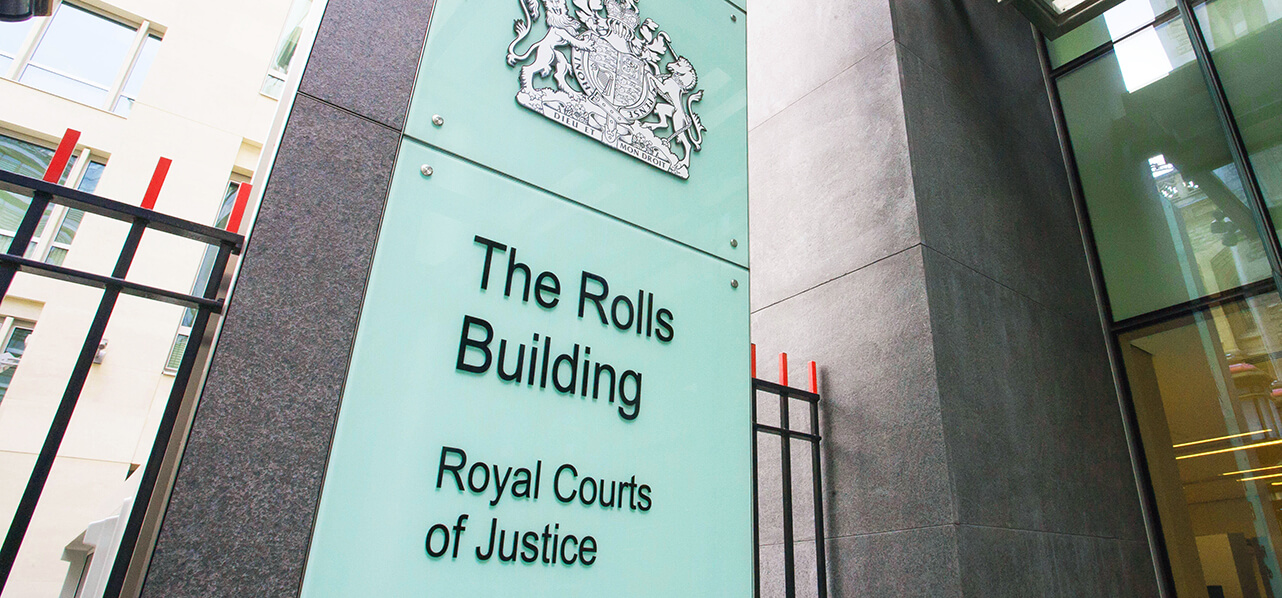Partner London
"The court held that Matière had acted in breach of its good faith obligations by undermining the joint venture bid."
Executive Summary
In a significant decision from the Technology and Construction Court (“TCC”), Alexander Nissen KC found that the claimant contractor, Matière SAS, had breached an express obligation of good faith under both a consortium agreement and a collaboration agreement in relation to the HS2 ‘Green Tunnels Project’.
The case concerned a joint venture arrangement between the parties. The court held that Matière had acted in breach of its good faith obligations by undermining the joint venture bid. However, ABM lost on causation, with the court finding that those breaches did not cause ABM to lose any real chance of securing the subcontract.
Notwithstanding the failure of ABM’s case on causation, the judgment provides some important clarification on the interpretation and application of express good faith obligations in construction joint ventures and the approach to loss of chance claims in the UK construction industry.
"EKJV had concerns about this approach due to cost and transport issues and explored alternatives."
Factual Background
Matière SAS, a French designer, fabricator and installer of civil engineering structures, and ABM Precast Solutions Ltd, a UK specialist in pre-cast reinforced concrete products, had agreed to bid together as a joint venture subcontractor for the ‘Green Tunnels Project’ on the HS2 rail link. The works concerned the manufacture, supply and installation of three ‘cut and cover’ tunnels at locations in Buckinghamshire and West Northamptonshire.
The main contractor was initially a joint venture between Eiffage Genie Civil and Kier Infrastructure and Overseas Ltd (referred to as “EKJV”), which later expanded to include Ferrovial and BAM. Under the proposed joint venture, Matière would design the Green Tunnels and coordinate their installation, whilst ABM would be responsible for manufacturing the tunnels. The JV was not financially integrated; each party would make profits on their own scope of work.
The parties entered into a Consortium Agreement in January 2019, followed by a Professional Services Contract (“PSC”) with EKJV in February 2019, in which they were jointly appointed as “the Consultant” to provide professional services. In June 2020, they entered into a more sophisticated Collaboration Agreement.
Central to the dispute was ABM’s proposal to manufacture the precast concrete tunnel components at a new permanent factory to be built at Scunthorpe. EKJV had concerns about this approach due to cost and transport issues and explored alternatives. Eventually, in September 2020, EKJV terminated its relationship with the ABM/Matière joint venture and later contracted directly with Matière for installation work and with another contractor, Stanton Bonna, for manufacturing.
Matière’s Claim
Matière claimed £373,295.06 for sums due under the Consortium Agreement. The arrangement was that ABM would invoice EKJV for services performed by Matière under the PSC and, when paid, would pass said payment to Matière.
ABM’s Counterclaim
ABM’s principal counterclaim was for the loss of chance in winning the bid, which it alleged was “virtually certain” before Matière’s breaches but became “nil or virtually nil” after them. ABM evaluated this lost chance at 90% of its claimed lost profit of £18.92m (alternatively £16.62m). ABM also made an alternative claim for an account of profits in the sum of £2,249,399.
ABM alleged that Matière breached the agreements in several material respects:
- undermining the Scunthorpe factory – ABM claimed Matière criticised the Scunthorpe factory to EKJV, suggested alternatives, and searched for other production sites without ABM’s knowledge;
- presenting to a competitor – ABM alleged that in late 2019 or early 2020, Matière gave a slide presentation about the Green Tunnels Project to Stanton Bonna, a key competitor of ABM; and
- entering into separate agreements – ABM claimed Matière breached the Collaboration Agreement by entering into a new PSC with EKJV and subsequently a subcontract for installation work after the termination of the joint venture.
"A critical point was that ABM needed to prove that Matière's breaches had caused the loss of chance."
Contractual Interpretation
The court conducted a detailed analysis of the Consortium Agreement and Collaboration Agreement to determine the scope of the good faith obligations. Mr Justice Nissen concluded that the obligation in Clause 3.1 of the Consortium Agreement was “inexorably tied to the scope of professional obligations within the PSC” and rejected ABM’s case that it independently covered the entire collaboration.
Importantly, the court found that “the activity of negotiation and bid preparation as between ABM and Matière, and as between both of them and EKJV, was inextricably linked to the ultimate preparation of EKJV’s Stage Two Proposals, as required by the PSC“.
Duty of Good Faith
The court carefully considered the content of an express duty of good faith, noting that its core meaning is “to act honestly” but may also include conduct which would be regarded as “commercially unacceptable to reasonable and honest people, even if not necessarily dishonest“.
The judgment drew on Re Compound Photonics Group Ltd [2022] EWCA Civ 1371, which emphasised that “an express clause in a contract requiring a party to act in ‘good faith’ must take its meaning from the context in which it is used” and that such a duty might include “fidelity to the bargain” or “adherence to the spirit of the agreement“.
The Court held that in this joint venture context, the good faith obligation: “contained a requirement that each of ABM and Matière would act honestly with each other and would not conduct themselves in a manner which would be regarded as commercially unacceptable to reasonable and honest people“.
Causation and Loss of Chance
The Court applied the loss of chance doctrine, adopting a three-stage approach:
- determining whether loss of chance is recognised as a head of damage (it was in this case);
- establishing whether the claimant lost a particular chance on the balance of probabilities; and
- quantifying the lost chance as a percentage.
A critical point was that ABM needed to prove that Matière’s breaches had caused the loss of chance – that they were the “effective or dominant cause” of the reduction in the chance of winning the subcontract.
"Despite finding breaches of good faith, the court dismissed ABM's counterclaim on causation grounds."
The Court’s Decision
On Matière’s Claim
The court allowed Matière’s claim for £373,295.06 in full, finding that it had sufficiently discharged the burden of proving its claim.
On ABM’s Counterclaim
Breach of Good Faith
The court found that Matière had breached its good faith obligations under both the Consortium Agreement and the Collaboration Agreement by undermining the Scunthorpe factory proposal. The Court held that Matière’s conduct was “either dishonest or was of a type that would be regarded as commercially unacceptable to reasonable and honest people.” Matière had “not kept fidelity to the bargain it made with ABM” and its actions “had the potential to render that bargain worthless or significantly less valuable“.
However, the court rejected ABM’s allegation that Matière had presented the project to Stanton Bonna in breach of the Consortium Agreement, finding insufficient evidence to support this claim.
The court also rejected ABM’s claim that Matière breached the Collaboration Agreement by entering into separate agreements with EKJV after termination. Mr Justice Nissen found that the Collaboration Agreement had effectively terminated following EKJV’s decision not to award the contract to the joint venture, making Clause 3.2 (which prohibited separate contracting) no longer effective.
Causation
Despite finding breaches of good faith, the court dismissed ABM’s counterclaim on causation grounds. The court concluded that:
“ABM has failed to prove that breaches by Matière caused it to lose a real and substantial chance of winning the subcontract.”
The court provided three main reasons for this conclusion:
- whenever Matière undermined the Scunthorpe factory proposal, “it did so in response to, or at the behest of, EKJV and with its encouragement“. EKJV would have made its own investigations into other sites and contractors regardless of Matière’s actions;
- there were other factors unrelated to Matière that diminished the prospects of the joint venture winning the subcontract, including concerns about ABM’s technical capabilities following issues with fire testing and problems with ABM’s performance on another project at Luton Airport; and
- ABM was never actually in a position to fund the construction of the Scunthorpe factory as proposed in its final offer. Mr Justice Nissen found there was “no evidence before the Court that it could ever have obtained funding at the time of Offer 10 or in the future either“.
"The case highlights the importance of carefully drafting and understanding express good faith obligations in joint venture agreements."
Implications for the UK Construction Industry
This judgment has several significant implications for construction professionals in the UK:
- express good faith obligations – The case highlights the importance of carefully drafting and understanding express good faith obligations in joint venture agreements. The court will give effect to such obligations, but they will be interpreted in their commercial context and with reference to the specific contractual framework;
- joint venture structures – The judgment emphasises the importance of having robust, clearly defined joint venture structures. The court noted that EKJV had concerns about the ABM/Matière JV structure because it lacked “any agreement between ABM and Matière that reflected legal allocation of risk sharing (including liability for losses) on a properly integrated basis“;
- loss of chance claims – The case demonstrates the significant evidential hurdles in establishing causation in loss of chance claims. Even where breaches are proven, claimants must show that these breaches, rather than other factors, were the effective cause of the lost opportunity;
- simultaneous negotiations – Construction professionals should be extremely cautious about conducting parallel negotiations with other parties that might undermine a joint venture. While the court found that Matière’s actions did not ultimately cause ABM’s loss, such conduct was clearly in breach of good faith obligations;
- commercial realism – The court was critical of ABM’s “over-optimism” about its prospects. The judgment serves as a reminder of the importance of commercial realism when assessing feedback from potential clients and the true prospects of securing work;
- financial capacity – The court placed significant emphasis on ABM’s inability to demonstrate that it could finance its proposals. This highlights the importance of ensuring that bids are fully funded and that evidence of this can be provided if required; and
- communication within joint ventures – The court’s detailed examination of the communications between the parties serves as a reminder of the importance of transparent and honest communication between joint venture partners, particularly when faced with challenges from clients.
The judgment in Matière SAS v ABM Precast Solutions Ltd provides a cautionary tale for construction joint ventures. While express good faith obligations will be enforced by the courts, proving that breaches of such obligations caused a loss of chance remains challenging, particularly where multiple factors influence the outcome and where the party alleging breach cannot demonstrate that they could have performed their own obligations.
Key contacts
Partner London
Senior Associate London
Related insights
Newsletter Commercial Disputes Weekly – Issue 267





